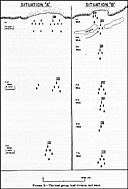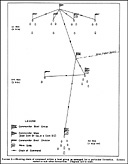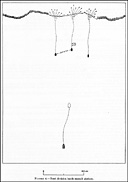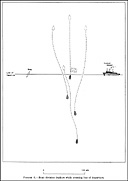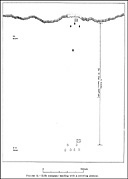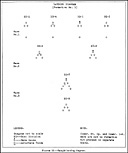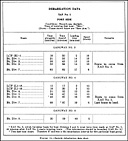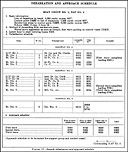
Chapter IV
Ship to Shore Movement
| Section | Page | |
|---|---|---|
| I. | General | 61 |
| II. | Task organizations | 62 |
| III. | Formations, frontages, and distances | 69 |
| IV. | Planning | 81 |
| V. | Execution | 94 |
| VI. | Reconnaissance patrols | 101 |
| VII. | Boat formation signals | 106 |
| VIII. | Salvage operations | 108 |
Section I
General
| Par. | ||
|---|---|---|
| 401. | Scope | 61 |
| 402. | Ship to shore movement vital part of attack | 62 |
- Scope.--
- The scope of this chapter includes those considerations directly connected with the planning and execution of the movement of troops from the beginning of their debarkation from transports until they are landed on the beach. It deals primarily with the infantry battalion and smaller units, and the corresponding boat organizations. Naval gunfire and the landing of field artillery, tanks, and other arms and services are treated in separate chapters.
- Although the same principles apply, special adaptations of the methods prescribed herein will be necessary in the event the situation favors towing or ferrying by larger vessels, or landing directly from larger vessels at piers or beaches.
-
In the formations illustrated in this chapter use of the following types of boats is
contemplated:
Special Navy landing craft. Standard Navy boats (for ships' landing forces).
-
- The formations illustrated in this chapter are, in general, also applicable for rubber landing craft and landing vehicles in the special operations where employment of those types is desirable. Necessary modifications entailed by the differences in capacities and other characteristics of the above types should be made.
-
Rubber craft should be available for use in the following situations:
- Crossing water too shoal for larger boats.
- Negotiating underwater obstacles.
- Landing in rocky and difficult places.
- Surprise landings.
- Landing from ships unable to accommodate a sufficient number of larger boats.
- Landing raiding parties and reconnaissance patrols.
- Landing from water-borne aircraft--see paragraph 155c and chapter VI.
- For river crossings after the initial landing.
- Landing of intelligence agents.
-
Landing vehicles, track, will be useful and should be available for the following employment:
- Crossing water too shoal for regular landing boats.
- Crossing coral reefs.
- Negotiating obstacles both under water and on land.
- Crossing swampy or marshy areas.

